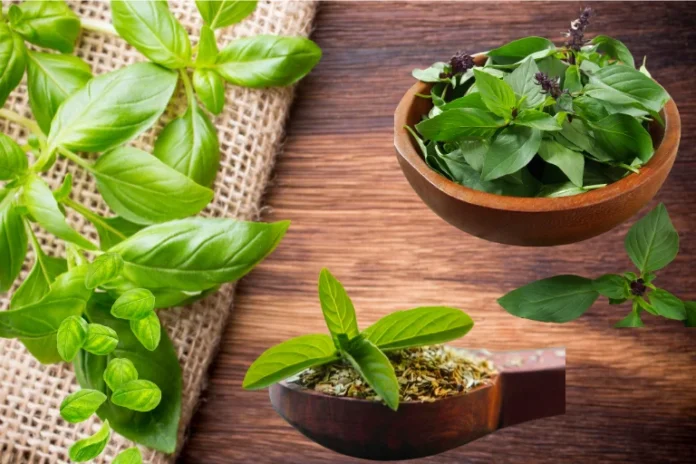Basil Plant: Health Benefits, How to Use, Nutrition, and More
Basil (Ocimum basilicum) is one of the most popular herbs used in kitchens worldwide. Known for its aromatic flavor and various health benefits, basil has been used for centuries in traditional medicine and culinary practices. This article will explore the health benefits of basil, its nutritional profile, different ways to use it, and more.
Health Benefits of Basil
1. Rich in Antioxidants
Basil is loaded with antioxidants, such as flavonoids and polyphenols, which help combat oxidative stress and reduce the damage caused by free radicals in the body. Antioxidants play a crucial role in preventing chronic diseases like cancer and heart disease.
2. Anti-Inflammatory Properties
Basil contains essential oils, such as eugenol, citronellol, and linalool, which have anti-inflammatory properties. These compounds help reduce inflammation in the body, making basil beneficial for conditions like arthritis and inflammatory bowel disease.
3. Supports Heart Health
Basil has been shown to reduce cholesterol levels and help regulate blood pressure. The antioxidants in basil also help prevent plaque formation in arteries, reducing the risk of cardiovascular diseases.
4. Enhances Digestive Health
Basil aids digestion by stimulating the production of digestive enzymes. It can help relieve bloating, indigestion, and gas. Additionally, its antibacterial properties help maintain gut health by fighting harmful bacteria.
5. Helps Manage Blood Sugar Levels
Basil has been found to help regulate blood sugar levels, making it beneficial for people with diabetes. It improves insulin sensitivity and reduces glucose levels in the bloodstream.
6. Boosts Immunity
Basil contains antimicrobial and antibacterial properties that help strengthen the immune system. Regular consumption of basil can help protect against common infections and illnesses.
7. Supports Mental Health
Basil is known to have adaptogenic properties, meaning it helps the body manage stress. It reduces cortisol levels, improves mood, and supports cognitive function.
8. Promotes Skin and Hair Health
The antibacterial and antifungal properties of basil help prevent skin infections, acne, and other skin-related issues. Basil can also strengthen hair follicles and reduce dandruff when used in hair treatments.
Nutritional Profile of Basil
Basil is low in calories yet packed with essential vitamins and minerals. Here’s a look at the nutritional composition of fresh basil per 100 grams:
Calories: 22 kcal
Carbohydrates: 2.7 g
Protein: 3.2 g
Fat: 0.6 g
Fiber: 1.6 g
Vitamin A: 2640 IU (53% of the daily recommended intake)
Vitamin K: 414.8 mcg (518% of the daily recommended intake)
Vitamin C: 18 mg (30% of the daily recommended intake)
Calcium: 177 mg (18% of the daily recommended intake)
Iron: 3.2 mg (18% of the daily recommended intake)
Magnesium: 64 mg (16% of the daily recommended intake)
How to Use Basil
Basil can be used in various ways to enjoy its health benefits and flavor.
1. Culinary Uses
Basil is a staple in many cuisines, especially Italian, Thai, and Mediterranean dishes. Here are some ways to use basil in cooking:
Fresh Basil Leaves: Add to salads, pasta, sandwiches, and soups.
Basil Pesto: Blend basil with olive oil, garlic, pine nuts, and Parmesan cheese to make a delicious pesto sauce.
Basil Tea: Brew fresh basil leaves in hot water for a refreshing herbal tea.
Infused Oil: Add basil leaves to olive oil to create a flavorful infused oil for dressings and cooking.
Garnish: Use fresh basil to garnish pizzas, grilled vegetables, and seafood dishes.
2. Medicinal Uses
Basil has been used in traditional medicine for its healing properties. Some common medicinal uses include:
Basil Extract: Used in herbal remedies to treat colds, coughs, and respiratory infections.
Basil Juice: Consumed for detoxification and to improve digestion.
Basil Poultice: Applied topically to treat insect bites, skin infections, and wounds.
3. Beauty and Skincare Uses
Face Mask: A paste of basil leaves and honey can be used as a face mask for acne-prone skin.
Hair Rinse: Basil-infused water can help reduce dandruff and promote healthy hair growth.
4. Home and Aromatherapy Uses
Essential Oil: Basil essential oil is used in aromatherapy to relieve stress and anxiety.
Natural Insect Repellent: Basil acts as a natural repellent against mosquitoes and other insects.
Air Freshener: Basil leaves can be used to make a natural air freshener for the home.
Different Varieties of Basil
There are several varieties of basil, each with its unique flavor and aroma:
Sweet Basil: The most common type, used in Italian dishes and pesto.
Thai Basil: Has a licorice-like flavor, commonly used in Asian cuisine.
Holy Basil (Tulsi): Used in Ayurvedic medicine for its numerous health benefits.
Lemon Basil: Has a citrusy aroma, great for teas and salads.
Purple Basil: Adds a beautiful color to dishes and has a slightly spicy taste.
How to Grow and Store Basil
Growing Basil
Basil is easy to grow and thrives in warm, sunny conditions. Here’s how to grow basil at home:
Plant basil in well-draining soil with plenty of sunlight.
Water regularly but avoid overwatering.
Pinch off the top leaves to encourage bushy growth.
Harvest fresh leaves as needed and avoid letting the plant flower too soon.
Storing Basil
To keep basil fresh for longer, follow these storage tips:
Store fresh basil in a glass of water at room temperature.
Wrap basil leaves in a damp paper towel and place them in the refrigerator.
Freeze chopped basil in ice cube trays with olive oil for later use.
Dry basil leaves and store them in an airtight container.
Conclusion
Basil is a versatile herb packed with health benefits, essential nutrients, and culinary versatility. Whether you use it fresh in salads, brew it as tea, or apply it to your skin, basil can be an excellent addition to your daily routine. By incorporating basil into your diet and lifestyle, you can enjoy its numerous health-promoting properties while enhancing the flavor of your meals.

